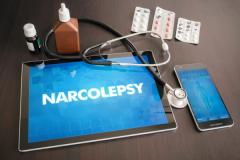
Monitoring Treatment Response in Narcolepsy
Panelists discuss the importance of setting realistic expectations when initiating pitolisant for narcolepsy, emphasizing consistent daily use, gradual titration, and patient-centered measures of success, while accounting for external stressors, lifestyle factors, and the need for occupational accommodations to support long-term functional outcomes.
Episodes in this series

This segment emphasizes setting patient expectations and monitoring effectiveness when starting a medication like pitolisant for narcolepsy. Pitolisant acts as a maintenance therapy, not an as-needed treatment, and must be taken consistently each morning. Its effects are gradual, requiring several weeks of dose titration and follow-up, typically around 8 weeks, to assess efficacy. Clinicians use tools like the Epworth Sleepiness Scale, but they also rely heavily on patient-reported changes—such as improvements in focus, mental clarity, and cognitive stability—as signs of treatment success.
The discussion highlights how external factors—emotional stress, physical exertion, schedule disruptions, or life changes—can temporarily impact symptoms and mimic treatment failure. For instance, patients often report feeling worse during exam periods or major life events, when sleep and stress are dysregulated. The speakers stress the importance of seeing the patient in context, distinguishing between true medication inefficacy and situational exacerbations. A comprehensive evaluation includes looking at cognitive demands, time zone changes, and even seasonality (eg, daylight saving time shifts), which can significantly affect patients with narcolepsy.
Finally, the conversation turns to functional support and occupational considerations. Work conditions—like sedentary, unengaging environments—can worsen daytime sleepiness, whereas active, stimulating jobs may help maintain alertness. Clinicians may need to guide patients in seeking accommodations under the Americans with Disabilities Act (ADA), such as flexible schedules or designated nap breaks. It is also vital to encourage patients to redefine success on their own timeline, especially in school or professional settings. The speakers stress that narcolepsy does not inherently limit potential, but managing it requires realistic pacing, lifestyle adaptations, and psychosocial support, reinforcing a compassionate
Newsletter
Receive trusted psychiatric news, expert analysis, and clinical insights — subscribe today to support your practice and your patients.
















